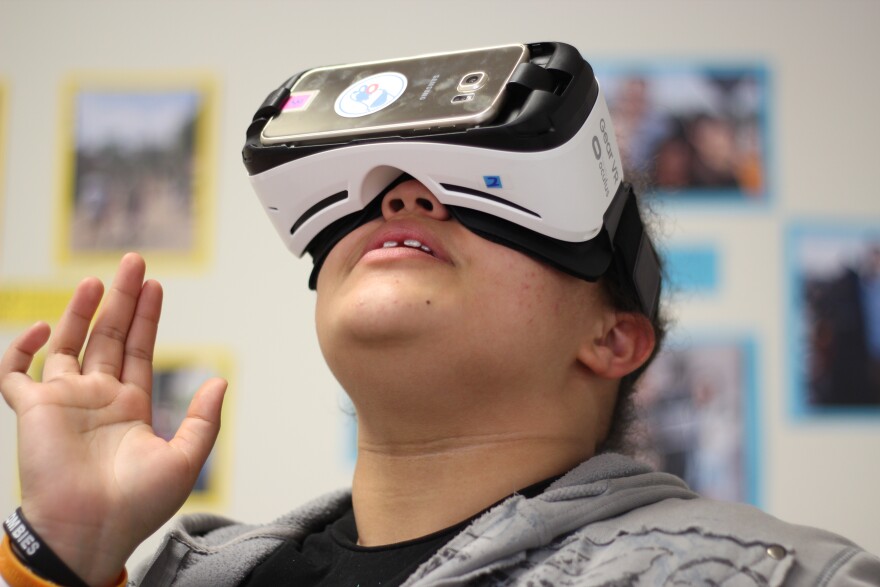An art-related virtual reality system is taking some St. Louis students to places filled with beauty and inspiration without their having to move any distance at all.
Using the program called WoofbertVR, students don audio-visual goggles to virtually travel to art museums such as the Courtauld Gallery in London and the Turner Contemporary in Margate, England.
“It’s cool,” said DeAnia, a junior. “It takes you places you can’t go in actual life.”
DeAnia is one of the 680 students currently enrolled at College Bound. The highly regarded nonprofit gets students from low-income and under-resourced backgrounds ready to go “to and through” college and look toward careers.
“We’re signed on for the long haul,” College Bound’s website said. “We’ll check in, nag if needed and believe in our students fiercely, imperfections and all.”
But the institution also focuses on preparing students culturally, as well as academically. That’s where WoofbertVR can bring cultural experiences straight into the classroom.
At a recent demonstration of the technology at College Bound’s North Jefferson location in Midtown, senior student Leonard was transfixed by Édouard Manet’s “A Bar at the Folies Bergere,” one of the Courtauld’s great treasures, and Manet’s last major work.

“I love this process,” Leonard said. By virtue of the virtual, he actually could see his “reflection” in the mirror alongside Manet’s melancholy, ambiguous barmaid.
Another College Bound student named Chastity, a junior, was virtually miles away at the Turner Contemporary, busy soaking up information about the late color-field painter Helen Frankenthaler. The picture had been on view in a 2014 exhibition called “Making Painting,” in which Frankenthaler’s work was shown with and juxtaposed to paintings by the 19th century genius J.M.W. Turner.
Chastity spoke appreciatively about the artwork, Frankenthaler and color-field painting. She said she also learned about Frankenthaler’s role in the tumultuous post-World War II art scene, which included abstractionists such as Morris Louis, Frankenthaler’s former husband, Robert Motherwell, and Jackson Pollock.
“It was weird at first,” Chastity said of WoofbertVR, “but I went with it, and it is really cool.”
WoofbertVR is the brainchild of the virtual reality company’s co-founder and CEO, financier Robert Hamwee. He is also CEO and president of New Mountain Finance in New York.
Hamwee was inspired to create this tech-centered, virtual reality company committed to student achievement after an aborted visit to a museum in Washington, D.C. That day, his children were bored, and it was too cold to wait in line to get in the building.

But shivering in the chill air of the nation’s capital, Hamwee wondered if virtual reality -- VR -- could be used as a leveling application. He wanted to see if the technology could break down barriers between cultural objects, such as paintings and sculptures, and children who might otherwise be resistant or, worse, not have the opportunity in the first place.
WoofbertVR (named for a beloved dog who met an untimely end) went from a cold-weather conception to birth and on to application. A number of current and former St. Louisans are involved, including Emily Blumenfeld, who took her M.A. from Washington University’s Department of Art History and Archaeology. She has long experience in consulting on projects for public sculpture and programs for a wide public.
The College Bound program hopes WoofbertVR’s immersion technology helps students grow an appreciation for and become conversant in art and its disciplines. That cultural comfort, in turn, may help these college-bound students overcome obstacles to forward progress.

